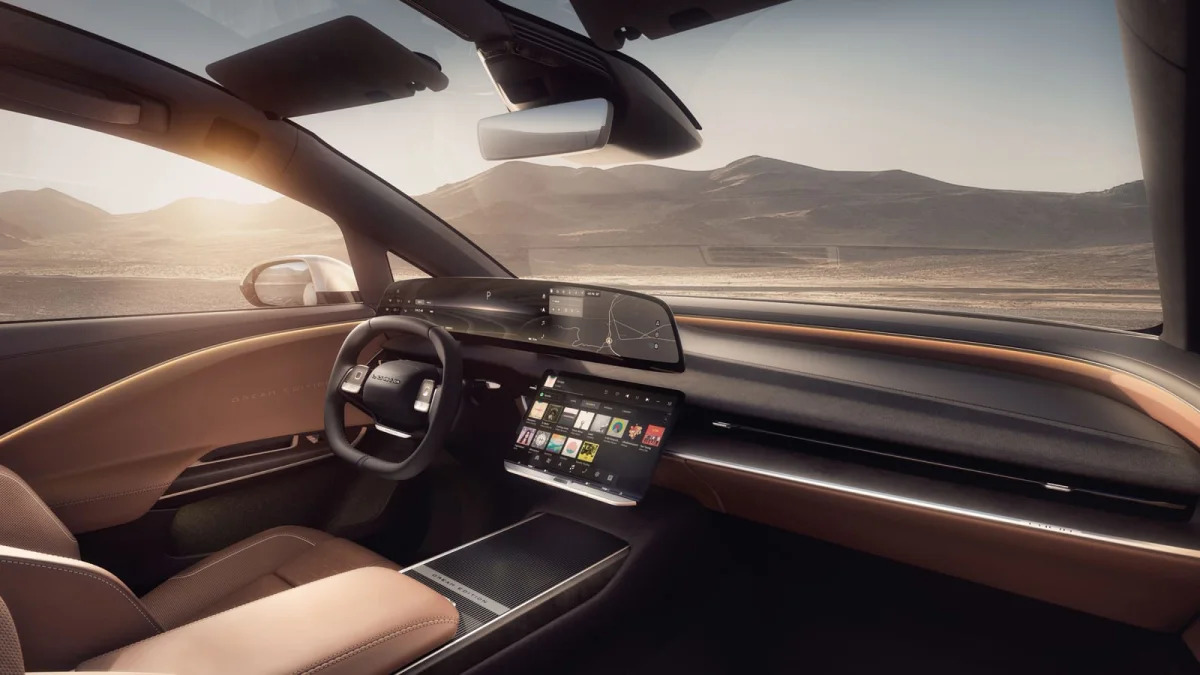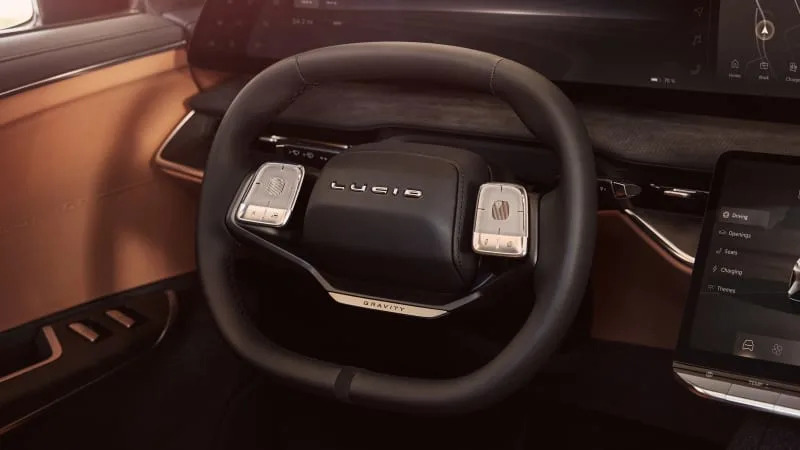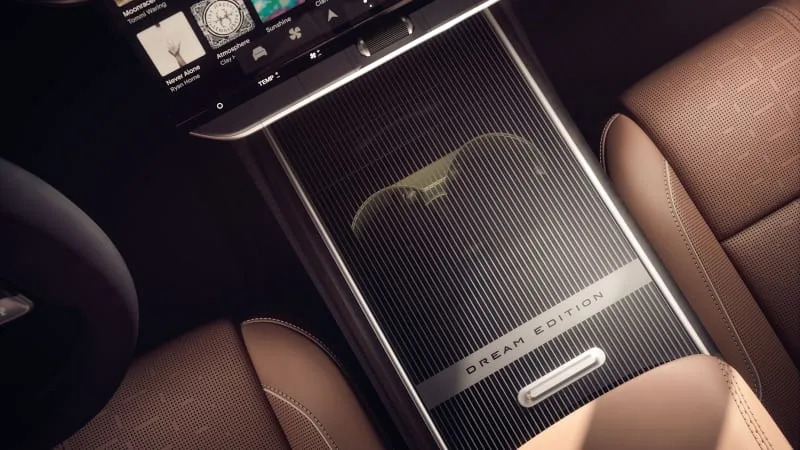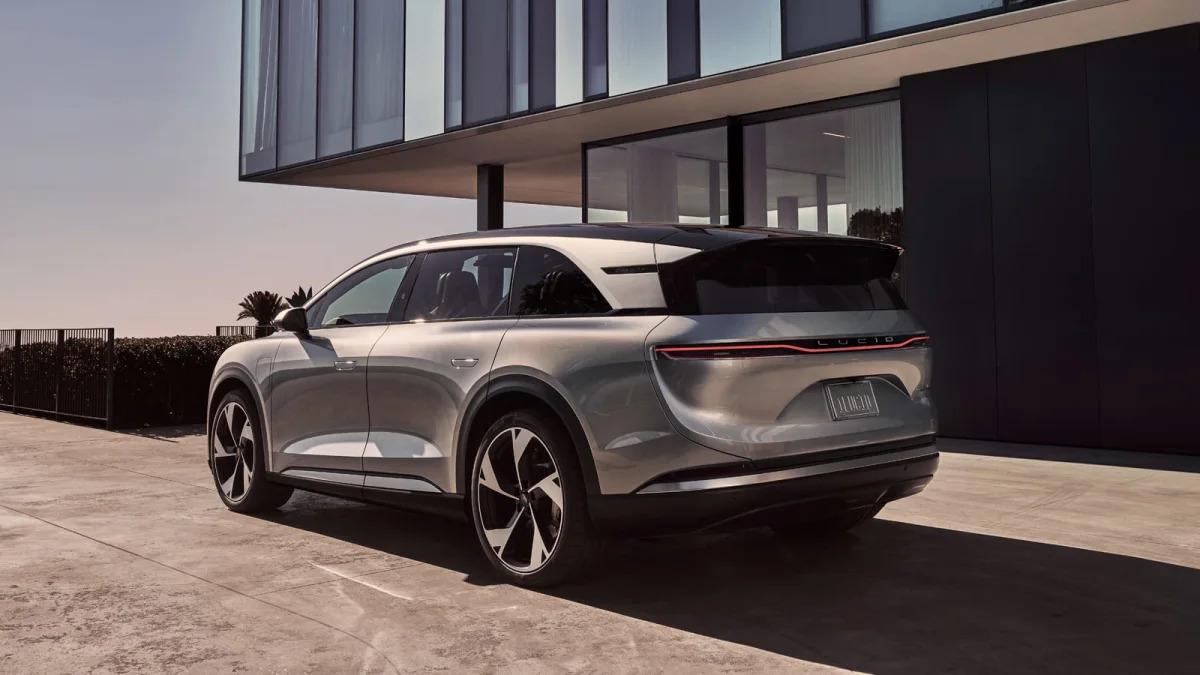Despite some teething problems, the Lucid Air has thus far wowed as the first product of a startup carmaker. Actually, the qualifier isn’t really necessary: the Air just wows, period, whether you’re talking about driving the thing or learning about its truly impressive engineering.
Problem is, having a one-car lineup consisting of a sedan is not exactly a recipe for success in 2023. An SUV is a must, and the Lucid Gravity is that SUV, bringing all that impressive electric motor and battery engineering to a more family- and market-friendly body style.
It should be said, though, that “SUV” is sort of a relative term here. Much like the Hyundai Ioniq 5, Kia EV6
Now, none of the preceding paragraph should be considered a bad thing. If you want a macho, off-roading EV, Rivian exists. The Lucid Gravity is a more sensible family vehicle, with more family friendly space and versatility than you’d get in the present collection of luxury EVs (the EQS SUV is LOL by comparison
Beyond having more cargo space behind the raised third row than most three-row SUVs (this thing is going to smoke my Luggage Test), the Gravity’s second row folds totally flat allowing for 104 cubic feet of space. An 8.5-foot-long surfboard can fit diagonally, while a 7-foot one can fit lengthwise. Hey, Lucid is a very California company with the state’s bear emblem proudly placed within each of the 20-plus-inch wheels – surfboard fitment is important, bra. And should you need a handy place to hang out post waves, the 8.1-cubic-foot frunk offers an available fold-up cushion to transform the space into a comfy, if lofty bench. Given the frunk’s shape, I’m less certain about its usefulness for cargo – it’s definitely less useful than the Air’s frunk. And for reference the Gravity’s total cargo space with that frunk comes to 112 cubic feet.

As for the rest of the interior, it’s enough of a “wow” moment to make you wonder why I’ve been going on so much about surfboards and frunks. It’s a clear evolution of what you’ll find in the Air, but it’s also considerably upgraded, making us wonder whether potential buyers of the Air might feel a bit shortchanged. The show piece is a 34-inch curved, uninterrupted OLED display that looks sensational from every angle. There are no cutlines between screens, but the areas to the left and right of the instrument area are touch sensitive. As in the Air, the right-side infotainment area works in concert with a larger screen below. Rather than the Air’s portrait orientation, though, the Gravity’s is a 12.6-inch tablet-like landscape orientation. There are physical controls below that screen, including those for volume, temperature, fan speed and two customizable buttons for whatever you’d like.
Another key upgrade over the Air is the steering wheel: It’s a squircle with a flat top and bottom, which is to ensure you can see the entire instrument panel beyond. It seems like it satisfies that goal. The squircle also has new touchpads on it, replacing the Air’s lovely-if-functionally-limited corrugated rollers. They were not functional in this pre-production vehicle, but one is meant to control the instrument panel and the other the infotainment screens, with swiping and sliding functionality similar to what you’d find on an Apple TV remote. Mercedes tried something similar, but its pads were so small th at they could be difficult to use. This has more promise.


